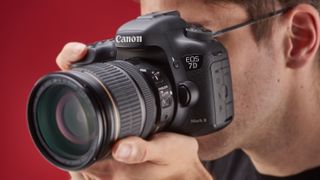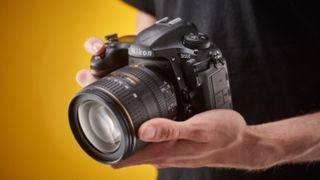Canon EOS 7D Mark II vs Nikon D500
The battle of the APS-C DSLR kings
Performance
Our resolution chart results make interesting viewing. Although the two cameras have a similar pixel count, the D500 is able to resolve just a little more detail throughout much of the sensitivity range. It doesn't consistently beat the 7D Mark II, but it has a slight edge that we can attribute to the lack of an optical low-pass filter.

Examining images taken throughout the sensitivity range reveals that noise levels from the two cameras are very similar, even at the 7D Mark II's top expansion setting (ISO 51,200). This suggests that, rather than making a major breakthrough with noise control, Nikon has pushed the boundaries to allow photographers to make their own decisions about what is acceptable image quality in any given shooting situation. Indeed, the D500's uppermost settings produce terrible results: in low light you'll struggle to recognise the subject at Hi 5 (ISO 1,640,000).
The Canon 7D Mark II's autofocus system is very good: it gets moving subjects sharp quickly and can keep them in focus in many situations. The D500's is just a shade nippier, though, and needs very little contrast to operate. It also latches onto subjects quicker, and I found I got a slightly higher hit rate with it.

Switch to Live View or Video mode, however, and the 7D Mark II's Dual Pixel AF technology comes into play, resulting in much smoother, faster AF adjustment than the D500's contrast-detection system can manage. While experienced videographers will still focus manually, you can get away with autofocusing while shooting video with the 7D II – but you really can't with the D500.
When using the general-purpose Evaluative (Canon) and Matrix (Nikon) metering systems during this test, there were a few occasions when a little exposure compensation was required, sometimes by one camera, sometimes by both. It was never excessive with either camera, although the D500 copes especially well with bright subjects.
The D500's auto white balance system tends to produce neutral to cold results, while the 7D Mark II's errs more on the side of warmth. Neither is objectionable and there's little in it, but when viewed alongside each other, I suspect most people may prefer the Canon results.
Get daily insight, inspiration and deals in your inbox
Get the hottest deals available in your inbox plus news, reviews, opinion, analysis and more from the TechRadar team.
